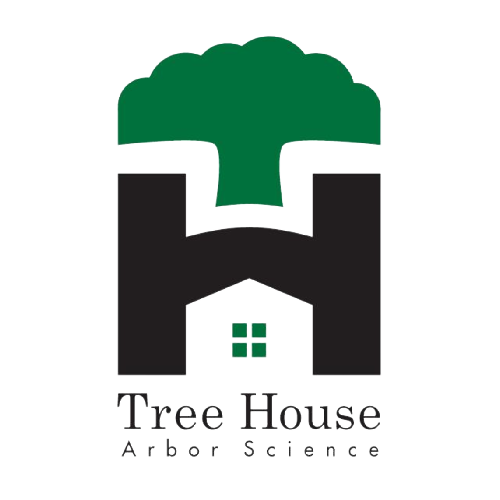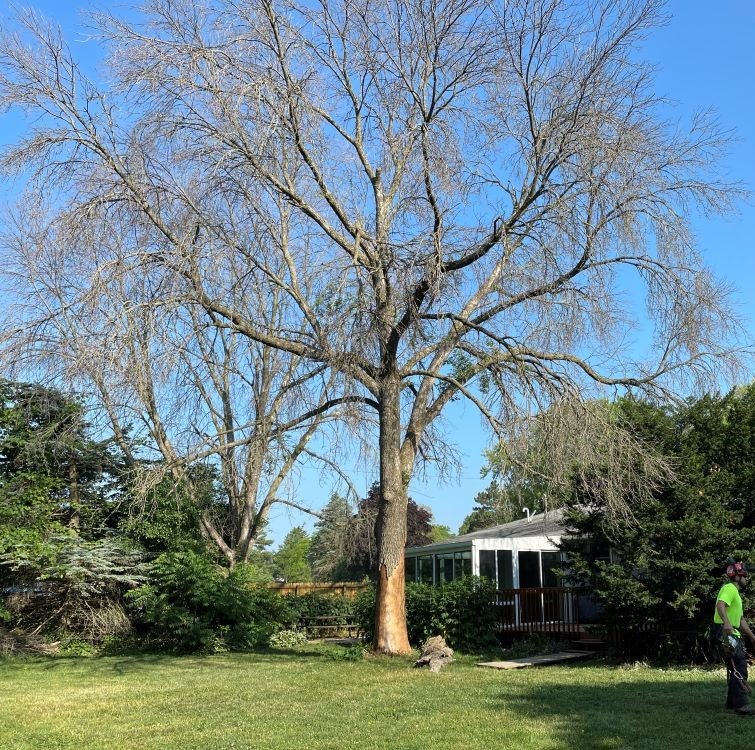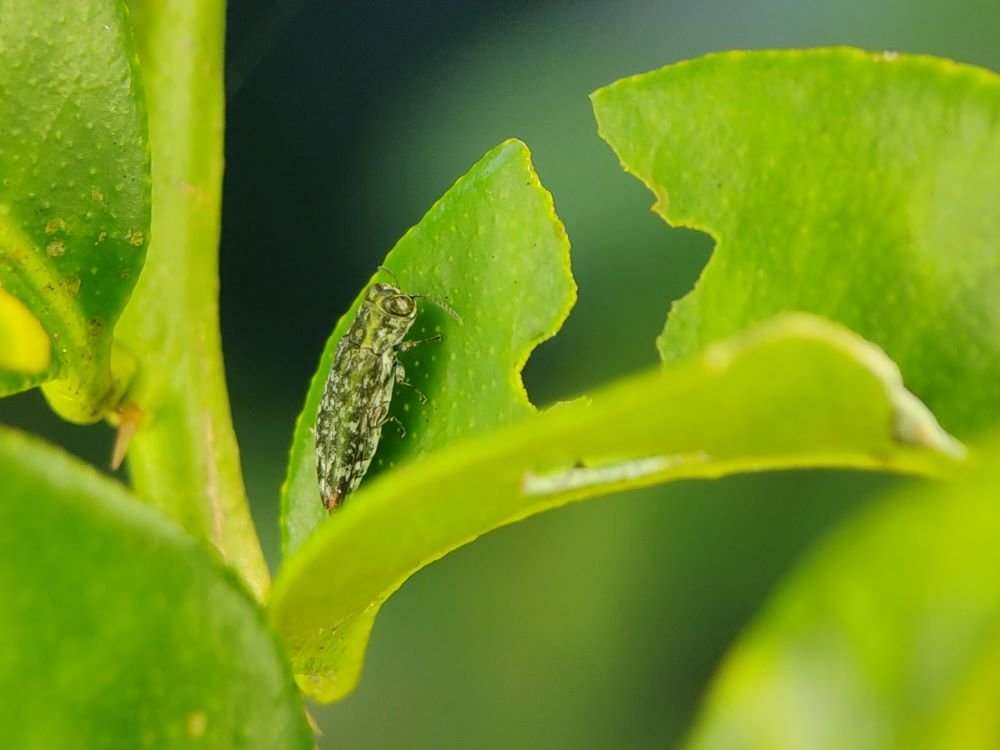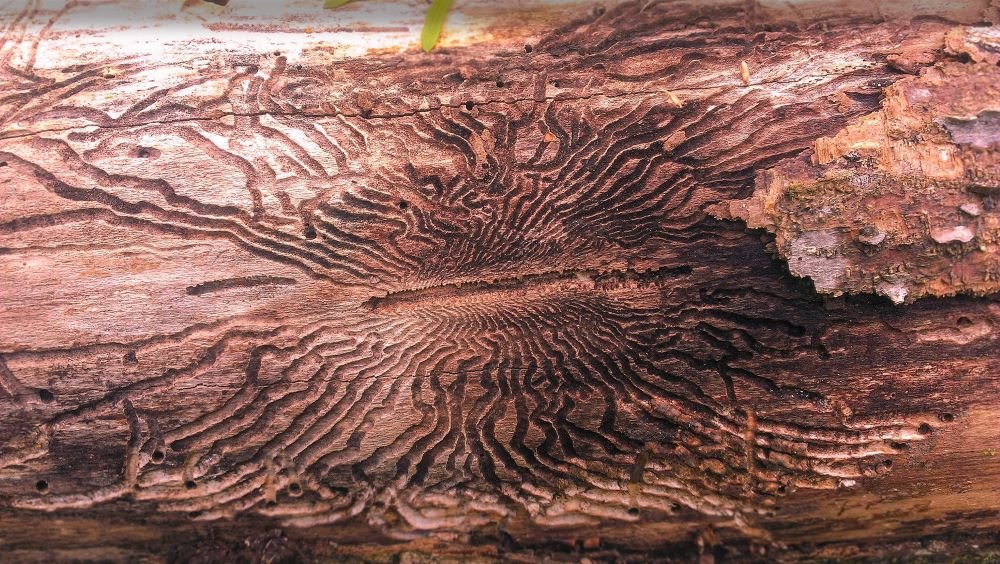Battling Emerald Ash Borer in Madison
Protecting and Treating Infected Ash Trees
We recently removed this Ash Tree in Madison that was killed by Emerald Ash Borer.
In the picturesque Madison neighborhoods of Monona, Shorewood Hills, and Stonefield, a silent threat lurks among the majestic ash trees. The Emerald Ash Borer (EAB) has made its presence known, causing significant damage to these beloved trees. At Tree House Arbor Science, we are dedicated to preserving the urban forest and helping homeowners combat the destructive impact of EAB. In this article, we will delve into the origins of the Emerald Ash Borer, its appearance, and provide valuable insights into effective treatment options to save your ash trees. Let's explore this menacing insect, discover how to identify infested trees, and learn about treatment strategies that can extend the life of your beloved ash trees.
What is Emerald Ash Borer?
The Emerald Ash Borer (EAB) is an invasive beetle native to Asia. It first arrived in North America in the early 2000s, likely through infested wooden shipping materials. Since its arrival, the EAB has spread rapidly, causing devastation to ash tree populations across the continent. These small, metallic green beetles disrupt the tree's vascular system, ultimately leading to tree decline and death if left untreated.
Where did Emerald Ash Borer come from?
The Emerald Ash Borer is believed to have originated in northeastern Asia, including countries like China, Japan, Mongolia, and Korea. It likely traveled to North America through international trade, with its first sighting in Michigan. From there, it spread through the transport of infested firewood and other wood products, gradually infiltrating neighboring states and reaching Madison, Wisconsin.
What does Emerald Ash Borer look like?
The Emerald Ash Borer Beetle and the damage done by its larvae under the bark of the tree.
The adult Emerald Ash Borer is a small metallic green beetle measuring approximately half an inch in length. It has a narrow, elongated body with a shiny emerald green coloration. When disturbed, the EAB may quickly fly away, making it challenging to spot. The larvae of the EAB, which cause the most significant damage, are creamy white and reside beneath the bark of ash trees.
How do I get rid of Emerald Ash Borer?
To effectively manage and control Emerald Ash Borer infestations, you need to consult tree service professionals like Tree House Arbor Science. We offer comprehensive EAB treatment options tailored to the specific needs of your ash trees. Treatment typically involves the application of insecticides that target the EAB larvae, either through trunk injections or soil drenches. Our trained arborists will assess the health and condition of your ash trees, determine the appropriate treatment approach, and develop a long-term management plan.
Can I get rid of Emerald Ash Borer naturally?
While there are some natural predators of the Emerald Ash Borer, such as parasitic wasps and woodpeckers, their impact alone is unlikely to provide sufficient control to save infested ash trees. However, implementing natural techniques alongside targeted insecticide treatments can help bolster a tree's resilience and aid in its recovery. These techniques may include promoting tree health through proper watering, mulching, and pruning practices, as well as fostering a diverse ecosystem that attracts beneficial insects.
Identifying an Infected Ash Tree
Early detection of EAB infestation is crucial in minimizing damage. You can identify signs of an infected ash tree by looking out for the following indicators:
Thinning canopy and declining foliage density.
D-shaped exit holes, approximately 1/8 inch in diameter, left by adult EAB beetles.
S-shaped galleries beneath the bark, created by EAB larvae.
Bark splits or cracks, often accompanied by increased woodpecker activity.
If you observe any of these signs on your ash tree, contact a professional tree care service like Tree House Arbor Science promptly. Our expert arborists can conduct a thorough assessment, confirm the presence of EAB, and recommend appropriate treatment options to mitigate further damage and preserve the health of your ash tree. Remember, early detection is key to effectively managing EAB infestations and protecting the urban forest in Madison.
How long can an infected ash tree survive with EAB treatments?
This beautiful Ash Tree in Wingra Park has been successfully treated for EAB for about 10 years.
The survival of an infected ash tree treated for Emerald Ash Borer (EAB) largely depends on the severity of the infestation, the overall health of the tree, and the effectiveness of the treatment applied. While EAB treatments can help prolong the life of an infected ash tree, treatments do not guarantee the tree's indefinite survival.
In general, EAB treatments aim to suppress the population of EAB larvae within the tree and reduce the damage caused by the infestation. Systemic insecticides are commonly used to treat EAB infestations by either trunk injections or soil drenches. These treatments are designed to protect the tree for a certain period, usually one to three years, depending on the specific product and application method.
It's crucial to initiate treatment as early as possible when signs of EAB infestation are detected. In the early stages of infestation, when the tree is still relatively healthy, treatments have a higher chance of success in controlling EAB populations and preventing further damage. However, if the infestation has progressed significantly, or if the tree is already severely compromised, the effectiveness of the treatment may be limited, and the tree's survival may be compromised.
Consult with Tree House Arbor Science’s arborists to assess the condition of the infected ash tree and determine the best course of action. We evaluate the tree's health, consider the extent of EAB infestation, and provide appropriate treatment recommendations. Proactive management and monitoring of the tree's health are necessary.
Caring for Your Madison Ash Trees
The Emerald Ash Borer poses a significant threat to ash trees in neighborhoods throughout the Madison area. At Tree House Arbor Science, we understand the importance of preserving these trees and the beauty they bring to our communities.
By recognizing the signs of Emerald Ash Borer infestation, understanding treatment options, and seeking professional assistance, you can take proactive steps to protect your ash trees from the devastating impact of this invasive pest.
Let us be your trusted partner in safeguarding the urban forest and ensuring the longevity of your cherished ash trees. Together, we can combat the Emerald Ash Borer and maintain the natural splendor of Madison's neighborhoods. Remember, early detection, prompt treatment, and ongoing monitoring are the best tools in the battle against Emerald Ash Borer and in preserving the ash tree population in Madison.
Contact us for a free consultation today.




